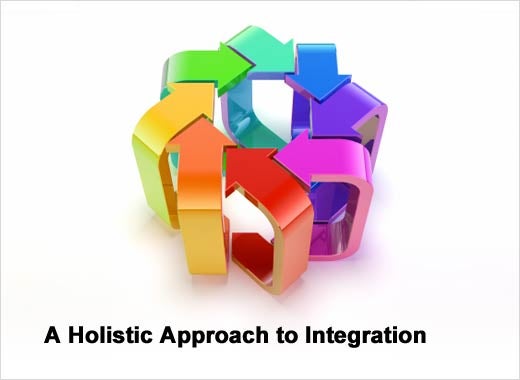Talend, a global open source software leader, recently announced results of the integration survey it commissioned from professional services firm Decision Management Solutions, which showed that nearly 50 percent of organizations are taking a holistic – or global – approach to integration that covers data, application and process integration – three areas that have historically been viewed as separate challenges. The Talend survey polled 236 integration professionals worldwide to gain a better understanding of how far enterprises have evolved from this siloed approach, and to evaluate the drivers and challenges for enterprise integration.
Click through for results from an enterprise integration survey conducted by Decision Management Solutions, on behalf of Talend
The results reveal that data, application and process integration are widely regarded as linked problems best solved collaboratively, with 71 percent of respondents either using a combined, integrated team or at least ensuring that their separate teams worked closely together. Only a small number (10 percent) were working completely siloed.
Those organizations focused on data integration were significantly more likely to have a single, integrated team that handles multiple integration disciplines. By contrast, a focus on application integration or process integration tended to generate a separate data integration effort.
Among the various types of teams, those focused on process integration were least likely to know if they had a canonical data model, and teams focused on data or process integration were most likely to say they did not have one. As you would expect, those with a primary focus on data integration were most likely to be using a canonical data model while those focused on application integration were most likely to have one defined for use in future projects.
Survey respondents were asked both what caused their integration challenges and what those challenges are. The biggest cause of integration challenges was not internal reorganization or mergers and acquisitions, but application consolidation. New business strategies, improving decision-making and streamlining business processes also drive challenges.
As far as the projects themselves were concerned, business process improvement was the number one challenge by far. Developing a real-time or near real-time data services layer was also widely seen as a challenge. Advanced analytics and Big Data showed up as challenges for many while complex cloud environments were clearly not yet a significant challenge in many integration projects.
As far as the integration projects themselves were concerned, business process improvement was by far the top challenge. Well over half (58 percent) of respondents said they could not easily model and manage new and existing processes to help them integrate business workflow into their existing applications and data. Most of the respondents are adopting business process management (BPM) to address these issues, with three quarters of teams actively considering BPM. Technical workflow and orchestration of IT applications and customer facing systems were the top two use cases for BPM, reflecting respondents’ focus on internal process improvement.
“As organizations around the world seek to optimize their systems and business processes, they are increasingly looking to integrate IT systems and disparate teams to eliminate redundancy and improve efficiency,” said Fabrice Bonan, Talend’s co-founder and chief technical officer. “Our survey shows that putting a global and unified integration strategy in place ensures that organizations are building a platform that can serve as a true foundation for their future growth.” |









